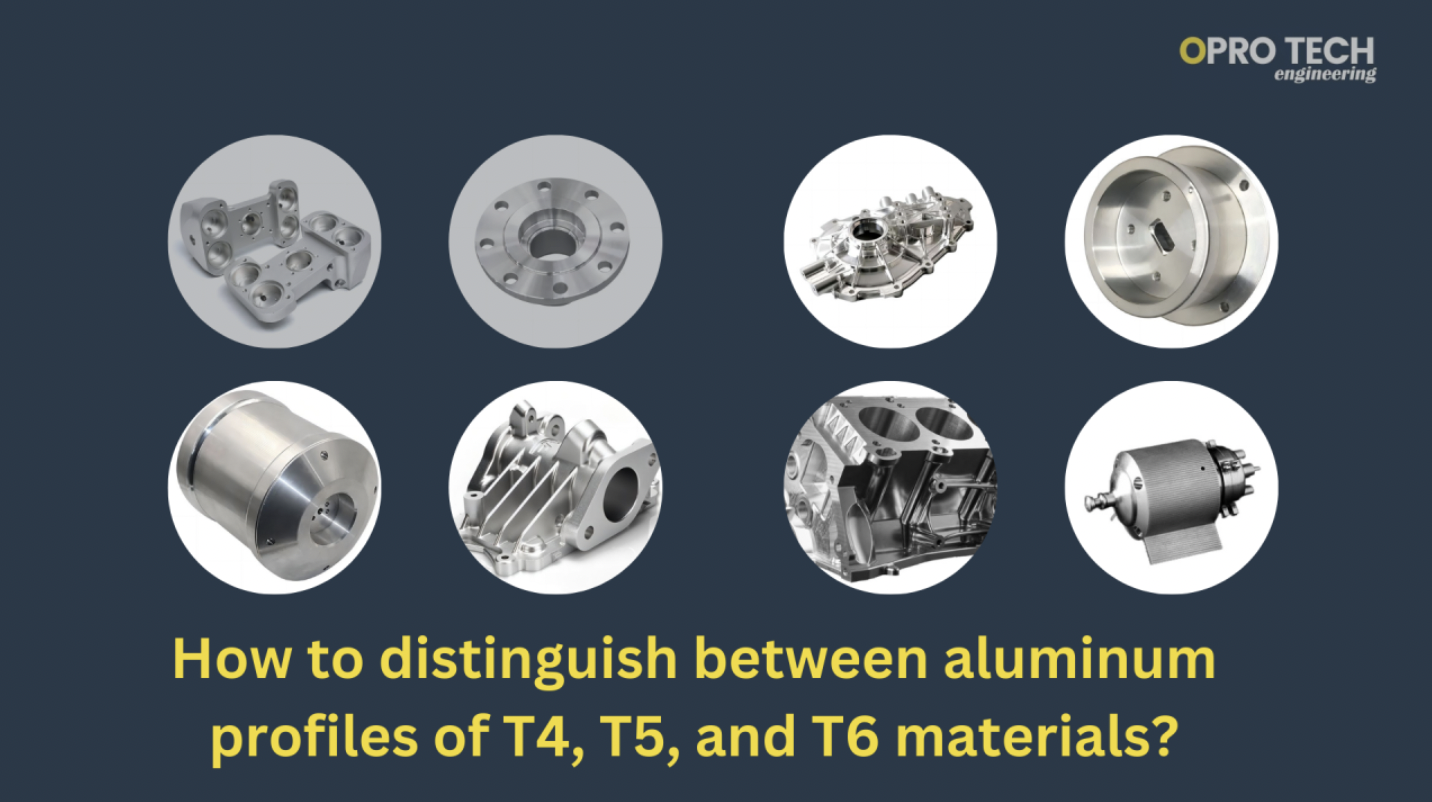How to distinguish between aluminum profiles of T4, T5, and T6 materials?

We often see markings like 6063-T5/T6 or 6061-T4 in the material column. The numbers 6063 or 6061 in these markings represent the grade of aluminum profiles, while T4/T5/T6 represents the condition of the aluminum profiles.
So what are the differences between them?
This article will explore this topic!
Aluminum is a commonly specified material for extrusions and profile shapes due to its mechanical properties, making it highly suitable for shaping and forming metals from billets.
Its high ductility means that the metal can be easily shaped into various sections without expending a significant amount of energy during processing or forming, and aluminum's melting point is typically about half that of ordinary steel.
These two facts mean that the energy consumption of extruding aluminum profiles is relatively low, reducing both mold and manufacturing costs.
Lastly, aluminum also boasts a high strength-to-weight ratio, making it an excellent choice for industrial applications.
As a byproduct of the extrusion process, profile surfaces sometimes exhibit fine, almost imperceptible lines.
These are the result of auxiliary tools during extrusion and can be specified for additional surface treatments to remove these lines.
To improve the surface finish of profile sections, minor surface treatment operations can be carried out, such as end milling after the main extrusion process.
These machining operations can be specified to improve the geometry of the surface by reducing the overall surface roughness of the extrusion profiles, enhancing part profiles. These treatments are typically specified for applications requiring precise part positioning or strict control of mating surfaces.
For example: In simple terms, aluminum profiles of grade 6061 have better strength and machining performance, high toughness, good weldability, and corrosion resistance.
6063 aluminum profiles have better plasticity, allowing for higher precision of materials. They also have higher tensile and yield strength, exhibiting better fracture toughness, high strength, wear resistance, corrosion resistance, and high-temperature resistance.
- T4 condition: Solution treatment + natural aging, meaning that aluminum profiles are cooled after extrusion but not aged in an aging furnace. Aluminum profiles without aging have relatively low hardness and good deformability, suitable for later bending and other deformation processing.
- T5 condition: Solution treatment + incomplete artificial aging, meaning that after extrusion, they are air-cooled and then kept in an aging furnace at around 200 degrees Celsius for 2-3 hours. Aluminum in this state has higher hardness and certain deformability, making it the most commonly used in curtain walls.
- T6 condition: Solution treatment + complete artificial aging, meaning that after extrusion, they are water-cooled and then artificially aged at a slightly higher temperature and for a longer time than T5, resulting in a higher hardness state. This is suitable for occasions where higher material hardness is required.
Yield Strength: The stress at which a material begins to deform plastically.
Tensile Strength: The maximum stress a material can withstand without breaking.
Vickers Hardness: A measure of the hardness of a material, obtained by pressing a specifically shaped indenter into the surface of the sample under a specified load.
Plastic Deformation: A permanent change in shape occurring in a material subjected to stress beyond its elastic limit.
These properties and conditions are essential for determining the suitability of aluminum profiles for various applications.
For more infomation and discussion, feel free to contact:
WhatsApp: +66 80 741 2390